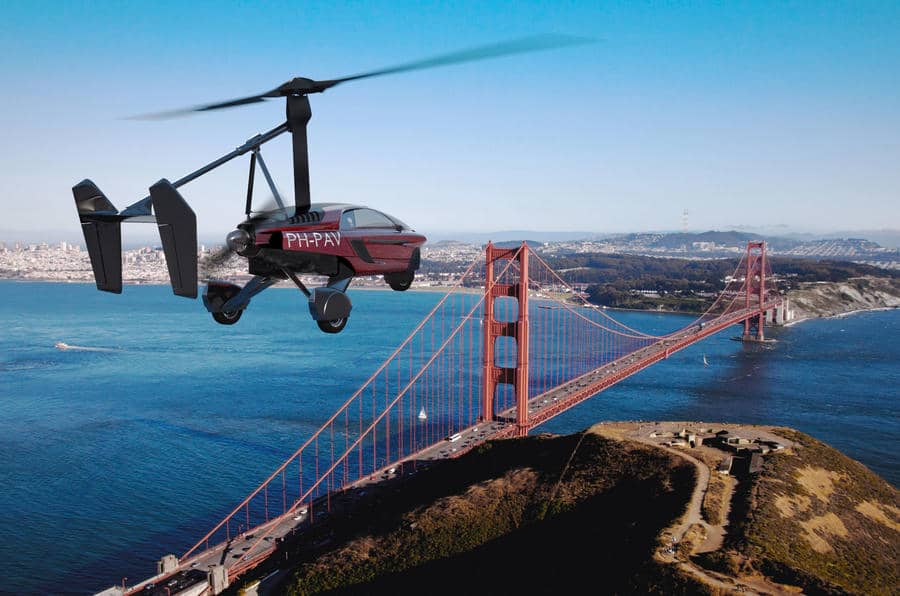We always imagine a life where technology would have gone so far that every one of us will own flying cars and be assisted by robots. We have not reached the level of the popular cartoon series ‘The Jetsons,’ but we have surely gotten our hands on flying cars. PAL-V, a Dutch company, announced PAL-V Liberty, the first ever flying car that was made available for pre-orders months ago. The company is now planning to take a trip around the globe in their flying car.
PAL-V was established in 2001 with a mission to make a vehicle that runs on the ground and cruises through the skies equally well. After many iterations, the company finally reached its milestone and named their vehicle ‘Liberty.’ The car has a driving range of 1,315 kilometers, and it can fly for 499 km. However, the team did manage to push beyond the range when flying over Greenland in fuel range test flights.
Mark Jennings-Bates from PAL-V will be making a journey starting from San Francisco. He will return to the same place after a 90-day journey around the world. According to the company, the journey might be completed in 60 days only. Another pilot will go along with Jennings-Bates in a similar Liberty model with a film crew that will record the entire adventure. The plans for the record-breaking trip are in the process, but there are no specific dates known yet.
The flying car concept has reached this level of strength after tireless work of more than 15 years.
“We’ve really just innovated two older products, put them together, and created something new that works within today’s rules,” explained Jennings-Bates.
The new technology is “DVC tilting” that allows the vehicle to drive safely even when the center of gravity is much higher, and the curved shape is thinner than the one required for flying.
DVC tilting combines with a Gyroplane to make PAL-V a reality. An unpowered rotor in autorotation helps a gyroplane to lift when the engine-powered propellers provide the thrust. When both the technologies come together, they make it possible for the vehicle to drive on the road as well as fly in the air.
The PAL-V is available for purchase, and its cost lies in the range of $399,000 to $599,000. The company will deliver the first of its orders in 2018. The Liberty was meant to be a vehicle that is both safe and easy to use. As Jennings-Bates puts it,
“Whilst it looks like a helicopter, it’s actually much more simple than a helicopter. If you talk to a gyroplane instructor, they’ll often tell you they have students who can fly solo in 5-8 hours of training.”
As the PAL-V Liberty is open to the public for purchase, an owner would require a driver’s and pilot’s license to be able to ride one. That leaves us with the question whether the flying cars will become as common as the regular ones or not?! What do you think?

